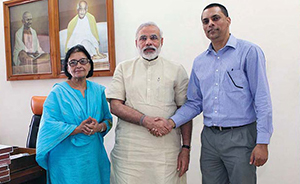How to bridge India’s tech-induced skill gap
The world stands on the brink of the Fourth Industrial Revolution, powered by a wide range of new technology breakthroughs ...
In addition to the inequalities existing in the access to institutions for higher education, another issue with the state of higher learning in India is that a majority of the students are enrolled in undergraduate programmes, compared to masters and the doctoral programmes. Moreover, at the undergraduate level, there is a low pass out rate of the students -- of the 2,90,16,350 students enrolled, the number of pass outs have been 64,19,639 in 2017.
Given that the Indian system of higher education faces multiple challenges of low gross enrollment in its colleges and universities, with most students settling on undergraduate studies, along with various socio-economic inequalities existing in access to higher learning, it is imperative for the country to address these issues. Further, emphasis must be given on increasing the number of students who pass out of colleges/universities, along with increasing enrollment numbers.
The technology-induced skill gap which the Indian economy is facing across its different sectors is bound to increase with the given higher education system. The change has to be brought from outside the existing constructs. Improvement in the teaching methodology from the traditional lecture courses, accreditation of online courses and redesigning the course curriculum to make it industry-relevant are some of the ways the technology-led changes in the labor market can be dealt with.
—Amit Kapoor is chair, Institute for Competitiveness, India. Deepti Mathur, senior researcher at large with Institute for Competitiveness contributed to the article











Comments.